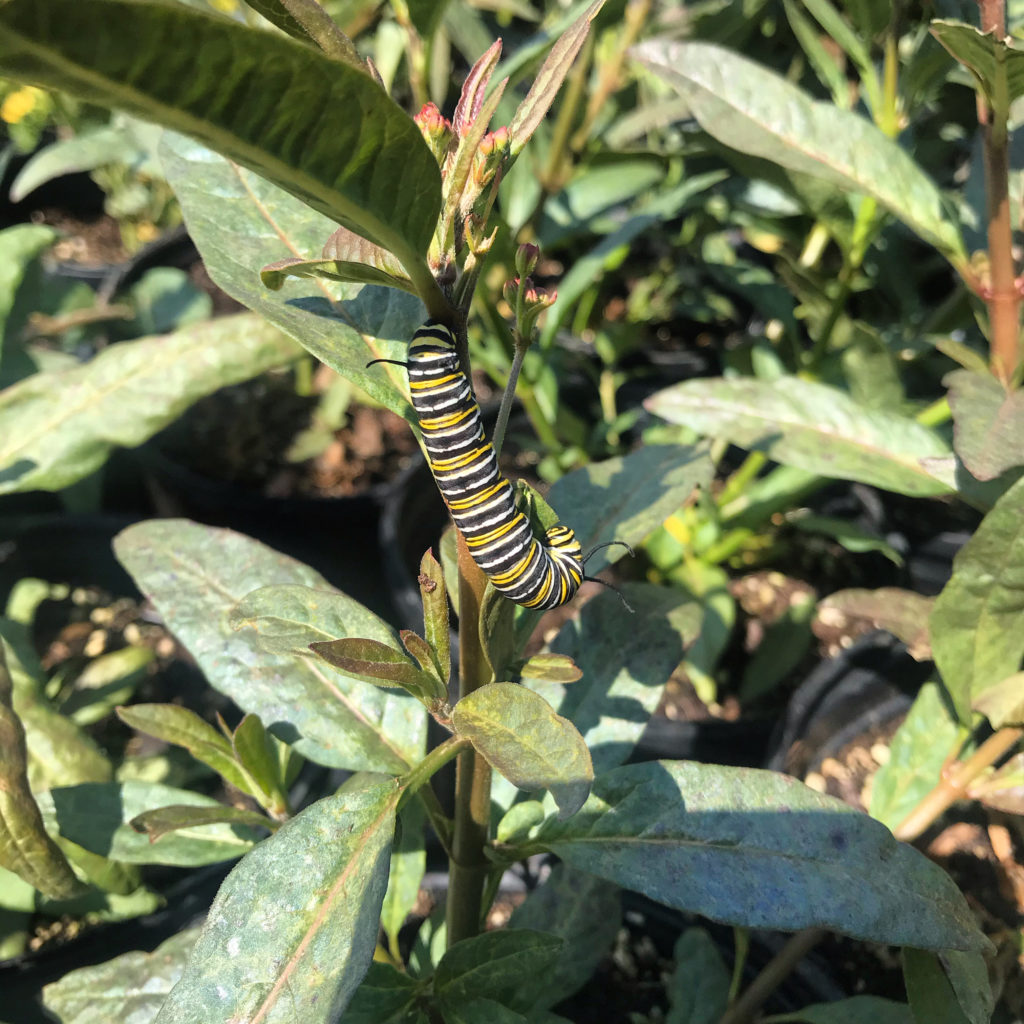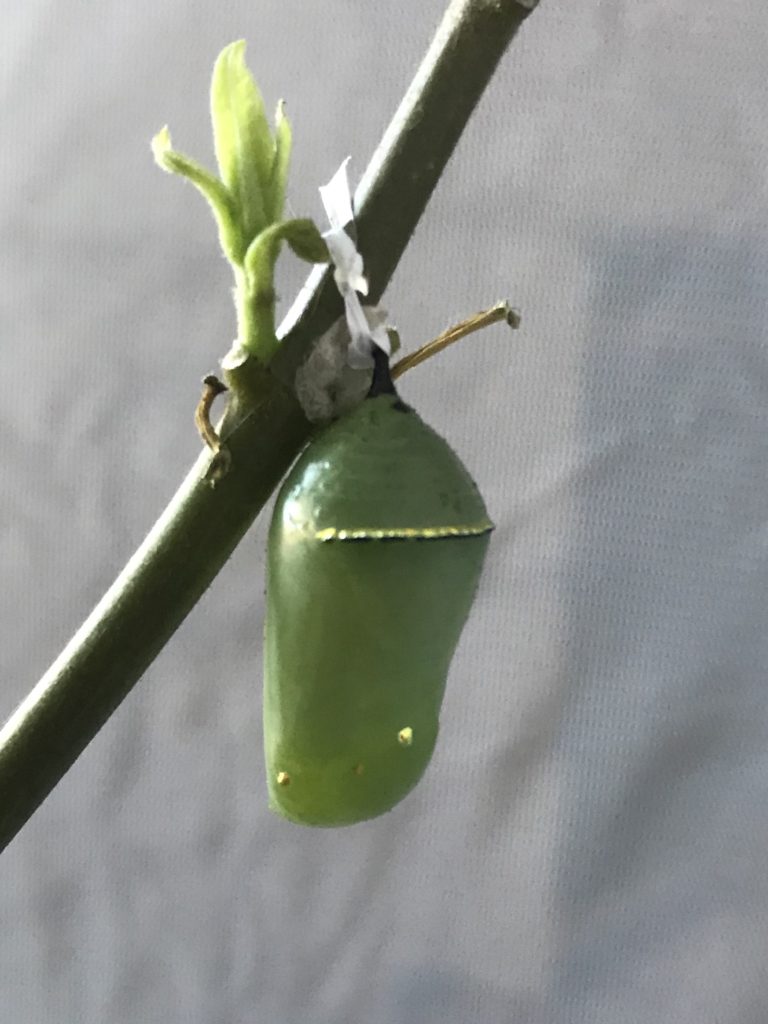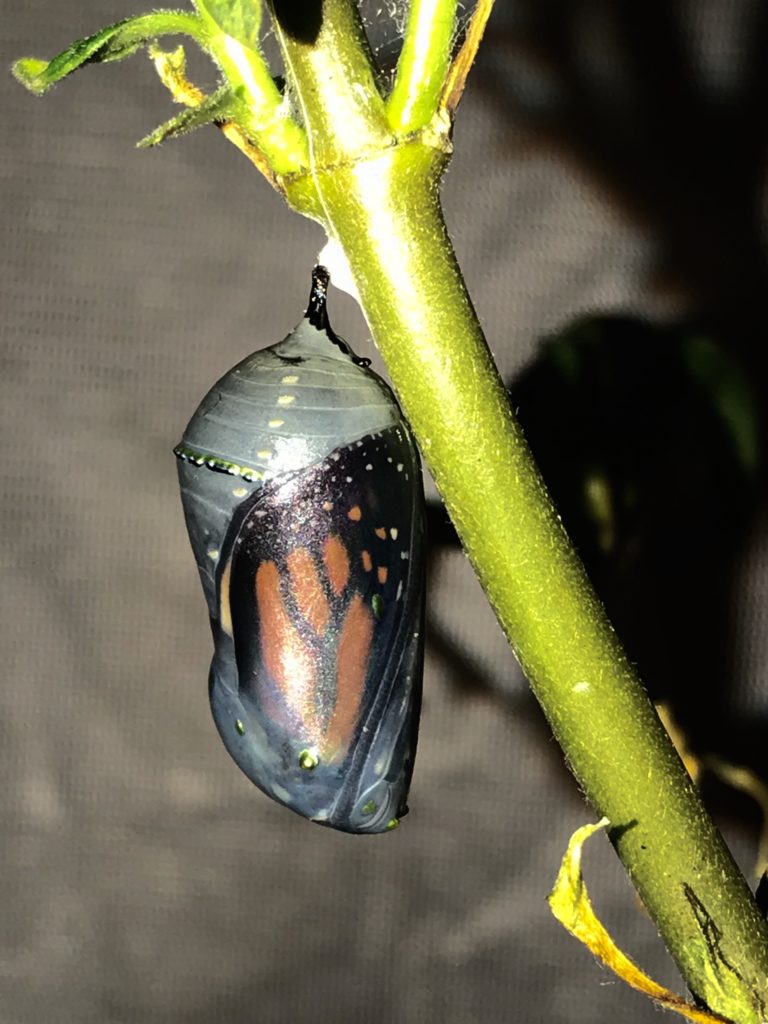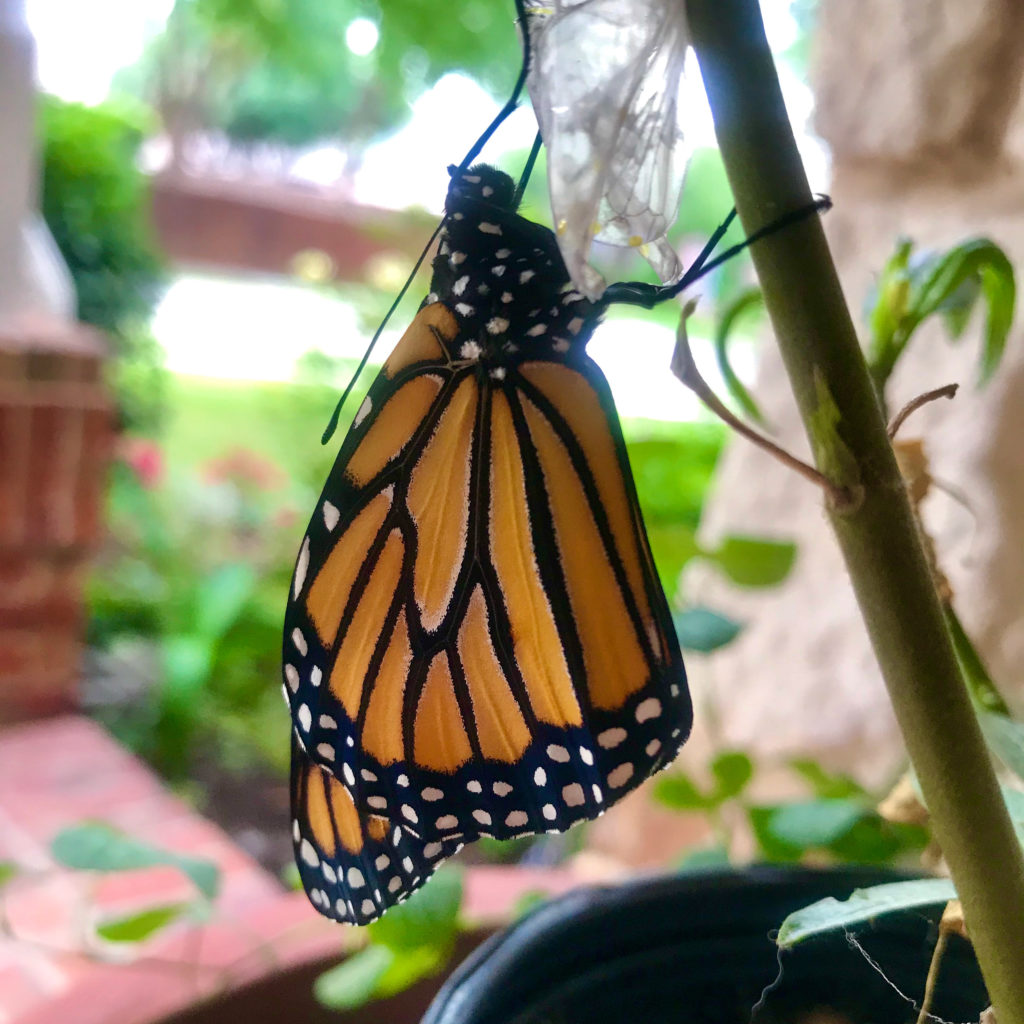
Working at Shades of Green in Frisco, I have opportunities to observe nature in action. One day in late April we received a batch of tropical milkweed from our farm in Collinsville. This particular batch was covered in monarch caterpillars.
[Monarch Caterpillars on milkweed | Photo by Lauri Diamond]

There is a peculiar connection between the monarch and the milkweed. “The latex-based sap produced by milkweed plants contains toxic compounds called cardenolides. But monarch caterpillars actually absorb these toxins as they feed on milkweed leaves, rendering the caterpillars themselves toxic to potential predators. The toxins found in the monarch butterfly host plant actually help protect the caterpillars and adult butterflies from birds and other predators.”(Savvy Gardening)
[Monarch Caterpillar on milkweed | Photo by Lauri Diamond]

The Tropical Milkweed should be cut back in the fall to avoid encouraging late season breeding and egg laying.(monarchventure.org) Common Milkweed, Asclepias syriaca, is a good choice for home gardens and the seeds are available online (Amazon).
[Monarch chrysalis | Photo by Lauri Diamond]

Of course, I had to bring a milkweed home with two caterpillars. Randy and Marvin were ready to form their chrysalis’ almost immediately. I ordered a habitat and, in the meantime, they lived in a canvas cat carrier. Randy formed a chrysalis on the zipper! Relocating a chrysalis is not a problem. Very carefully removing the chrysalis with as much of the white webbing as possible I transferred Randy back to a stem and attached with some dental floss. The chrysalis formation is actually the final molting for the caterpillar. The wings of the developing butterfly are clearly visible in the new casing.
[Chrysalis reattached with dental floss | Photo by Lauri Diamond]

The bright green chrysalis was amazingly beautiful with metallic gold droplets around the rim and base. There are several hypotheses about what the gold dots are: 1) Camouflage — they could reflect colors of the surroundings and break up the shape of the pupa, and they might also look like Dew droplets. 2) Warning coloration. 3) Filtering particular wavelengths of light which might be harmful to the monarchs. 4)Oxygen exchange.
[Darker Monarch chrysalis | Photo by Lauri Diamond]

At the end of the week, the chrysalis’ began to darken. This is a sign of development and the emergence is close. Both Randy and Marvin went from dark to clear in a few hours. Try as I may I could not catch them emerging! I turned away for a few minutes and there they were!
[Translucent chrysalis | Photo by Lauri Diamond]

Randy emerged first and we found out she was a Randie! There are two spots on the inner wings that denote males. Males also have thinner black veins and claspers at the end of their abdomens.(https://journeynorth.org/tm/monarch/ id_male_female.html) Marvin was a male and Randie a female.
[Monarch | Photo by Lauri Diamond]

The monarch journey began a fascination with butterflies and moths for me. As a new Master Naturalist (almost!) I have enjoyed learning about these wonderful creatures. Since Randie and Marvin, I’ve raised a Virgina Tiger Moth and six Swallowtails all from garden finds.
The journey is just beginning and I look forward to learning more and growing in the process!
[Monarch | Photo by Lauri Diamond]
I’ve also enjoyed painting butterflies from photos taken on Master Naturalist hikes.








